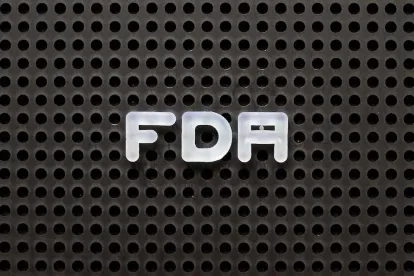The U.S. Food and Drug Administration (FDA) released its final rule on the traceability of high-risk foods on 21 November 2022.1 The regulations, to be codified at 21 C.F.R. part 1, subpart S (titled “Additional Traceability Records for Certain Foods,” hereinafter Traceability Final Rule (TFR) or regulations). FDA expects the TFR to facilitate the efficient recall of high-risk foods (e.g., leafy greens, fresh-cut produce, soft cheeses, fish) in the event of a foodborne illness outbreak by requiring certain data points to travel with foods from the farm level (or manufacturer or fishing vessel, depending on the food) to the retail level. FDA anticipates that these data points will allow it to readily track the food suspected of causing the foodborne illness back through the supply chain and ensure that remaining inventory is removed from the market in the event of a recall. In addition to accelerating FDA’s recall process for foods, the final regulations hopefully will benefit industry by limiting the scope of recalls (e.g., limiting the recall of a certain product produced by a single farm, rather than recalling all such product from the same growing region).
The final rule is one of the last remaining regulations to implement the Food Safety Modernization Act. The final regulations took into account over 1,100 comments received from stakeholders and interested parties and included several changes from the regulations as originally proposed in September 2020.2 The regulations become effective 20 January 2023 and have a compliance date of 20 January 2026.
Background
The TFR imposes recordkeeping requirements on certain foods that FDA considers high risk for foodborne illness outbreaks. Foods on the “traceability list” (listed foods3) include leafy greens, fresh-cut produce, sprouts, soft cheeses, fish, shellfish, and deli salads. FDA concluded that these and the other listed foods met criteria established by Congress to rate them as high-risk, including the history and severity of past foodborne illness outbreaks associated with the food, the health and economic impacts of such outbreaks, and the risk of the food being subject to microbiological or chemical contamination.
In the preamble to the final rule, FDA notes that surveillance by the Centers for Disease Control and Prevention indicates that the listed foods are responsible for nearly 770,000 illnesses in the United States per year (e.g., due to Listeria monocytogenes, Escherichia coli O157, and Salmonella). FDA estimates that compliance with the new regulations will cost US$700 million to US$24.6 billion over the next 20 years; however, FDA also estimates that the human health benefits of the regulations over the same period are expected to save US$600 million to US$23.7 billion and that savings from overly broad recalls will be in the range of US$2.5 billion to US$18.8 billion.
FDA states that the goal of the final rule is to facilitate the tracking of listed foods from the marketplace back to the point of harvest (e.g., for fresh produce and aquaculture products), point of manufacture (e.g., for soft cheeses and deli salads), and fishing vessel. Under the regulations, FDA’s goal will be for every entity along the supply chain to maintain records that will allow FDA to follow the given lot of food through the supply chain and ensure that other foods that may be similarly contaminated can be removed from the market in the event of a recall.
Amendments to the Proposed Rule
The final rule includes several changes as compared to the proposed rule to address some of the roughly 1,100 comments received from interested parties. Many of the changes addressed concerns raised by industry as to the scope of the regulations and the burden on parties along the supply chain. Some highlights of changes include:
-
Aligning traceability requirements with developing industry best practices.
-
Protecting the confidentiality of business information by allowing alternative means of referencing data.
-
Requiring the initial packer of a raw agricultural commodity (RAC) to assign a traceability lot code (Traceability Lot Code), as opposed to the “first receiver” of a listed food (thereby exempting harvesters and coolers from this requirement).
-
Revising and expanding exemptions for certain small producers, for sales directly to consumers (to include donations as well as sales), and for use of listed foods at meat and poultry processing facilities inspected by the U.S. Department of Agriculture’s Food Safety and Inspection Service.
-
Exempting foods that will be processed in such a way that they will no longer be considered listed foods (e.g., fresh tomatoes that will undergo a kill step during processing into canned tomatoes).
-
Extending the compliance date from 2 years to 3 years after the effective date.
Mechanics of the Traceability Final Rule
The TFR4 requires certain pieces of information to travel with listed foods as they proceed through the supply chain. In summary, parties handling listed foods at certain points along the supply chain (known as Critical Tracking Events) must record specific types of information (known as Key Data Elements). The Critical Tracking Events are limited to: (1) harvesting, (2) cooling (before initial packing), (3) initial packing, (4) shipping (only after initial packing; includes intracompany shipment), (5) receiving (only after initial packing phase; includes intracompany shipment), and (6) transformation (e.g., manufacturing/processing, commingling, repacking or relabeling, changing packaging or packing). The Key Data Elements vary depending on the type of Critical Tracking Event, but they include information such as geographic coordinates for the growing location.
A Traceability Lot Code must be assigned at the initial packing stage for fresh produce and with any transformation activity (e.g., repacking); therefore, a given listed food may have different Traceability Lot Codes as it moves through the supply chain. The Traceability Lot Code travels with the food and must be recorded at each subsequent Critical Tracking Event, along with any relevant Key Data Elements. Affected parties must also maintain and make available for FDA inspection a written traceability plan (Traceability Plan) and records of compliance.
To illustrate the mechanics of the final rule, we have provided below an example with fresh cucumbers. For purposes of the illustration, we have described the fact pattern, followed by the regulatory requirements in italics.
-
Farmer: A farm grows cucumbers but does not harvest. Farming is not a Critical Tracking Event; therefore, the farm need not generate Key Data Elements. However, the farm must maintain a Traceability Plan that includes, for example, the geographic coordinates and name of each cucumber field.
-
Harvester: The farm hires a third-party company that harvests the cucumbers. Because harvesting is a Critical Tracking Event, the harvester must generate and maintain certain Key Data Elements (e.g., the date, geographic coordinates for field locations, amount harvested) that will travel with the cucumbers as they proceed through the supply chain. (No shipping or receiving Key Data Elements are required because shipping and receiving Key Data Elements are required only after the initial packing.) The harvester must maintain a Traceability Plan and records.
-
Cooler: If the cucumbers are cooled (e.g., by water, ice, forced air, vacuum, or a similar process), the cooler must maintain additional Key Data Elements (e.g., date, amount, identity of the recipient(s)). The cooler must maintain a Traceability Plan and records. If cucumbers from various lots and locations are commingled before they are initially packed (such as during the cooling phase), the initial packer’s records will reflect that the traceability lot is associated with multiple fields or multiple farms, but there is no requirement to track which parts of the lot come from which fields or farms.
-
Initial Packer: Cooled cucumbers are sent to a packing house that will then ship the product to the processor. The packing house is the “initial packer” that will generate the food’s first Traceability Lot Code. The packer will have all of the Key Data Elements generated by the harvester and cooler and will generate additional Key Data Elements for the shipping activity. The packer must maintain a Traceability Plan and records.
-
Repacker: The produce repacker receives the packed cucumbers and transforms them by repacking into containers for sale to the consumer. The repacker will generate receiving, transformation, and shipping Key Data Elements. The processor will also generate a new Traceability Lot Code because repacking is a transformation event. The processor must maintain a Traceability Plan and records.
-
Distributor: A distributor receives, holds, and ships the cucumbers to the retailer. The distributor maintains receiving and shipping Key Data Elements.
-
Retailer: A grocery store receives the cucumbers. The retailer will maintain receiving Key Data Elements and must maintain a Traceability Plan and records.
If one is producing ingredients to supply to manufacturers of listed processed foods (e.g., milk and rennet suppliers selling ingredients to a soft cheese manufacturer), the TFR does not apply to the milk, rennet, and other ingredient suppliers. TFR requirements start with the manufacturer of the soft cheese.
Also, FDA has clarified in its comments that, if the listed food is described as being “fresh,” the TFR applies only to the fresh form. Listed foods include fresh herbs, for example. Dried herbs are not subject to the final rule. The entity that processes fresh herbs into dried herbs must maintain receiving records for the fresh herbs but is not required to maintain records for its subsequent transformation and shipping activities. In addition, subsequent recipients of the food need not maintain traceability records under the rule.
It remains to be seen whether the TFR will be able to deliver on the hoped outcome of fewer foodborne illnesses and more targeted recalls. Our lawyers are ready to assist with questions on the new rules and continues to monitor FDA guidance on the TFR.
FOOTNOTES
1 87 Fed. Reg. 70,910 (Nov. 21, 2022), https://www.federalregister.gov/documents/2022/11/21/2022-24417/requirements-for-additional-traceability-records-for-certain-foods#sectno-reference-1.1300.
2 85 Fed. Reg. 59,984 (Sept. 23, 2020), https://www.federalregister.gov/documents/2020/09/23/2020-20100/requirements-for-additional-traceability-records-for-certain-foods.
3 The complete Food Traceability List is available at https://www.fda.gov/food/food-safety-modernization-act-fsma/food-traceability-list.
4 For ease of review, we have focused on fresh produce as an example, but similar requirements exist in the context of listed processed foods and seafood.





 />i
/>i
